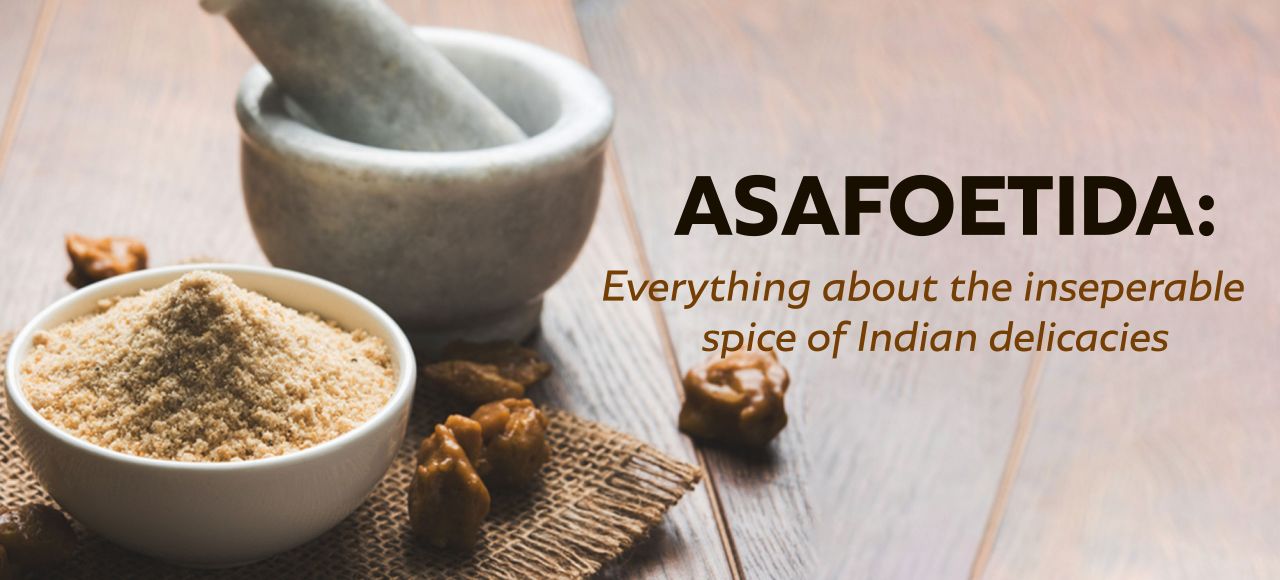Asafoetida: Everything About The Inseparable Spice of Indian Delicacies
Who doesn’t recognise the smell and taste of hing. The vivid smell that captures the entire house, and also the neighbourhood, when a tadka of hing is given to a dish is a memory we all have in our minds. As soon as the house smells of hing, you know you will have to leave the work you are doing and straightaway head to the dining table, because the stomach has received the signal and the mouth has started watering. Hing is just such an important element of Indian cooking that it really is a weapon to gather people round the table for meeting twice a day.
In this blog we are going to talk about this powerful ingredient – Asafoetida or commonly known as hing, and we will tell you all the important things related to it.
Keep reading till the end to get shocked!
What is Asafoetida or Hing?
It might be surprising to know that Asafoetida is a plant, which is famous for its bad smell and bitter taste. To make the hing we are aware of, the resin of the plant. The resin is made out of the juice that is found when the roots of the plant are cut.
Hing has a lot of beneficial properties, let us take a look at those too.
Health Benefits of Hing
- It aids in Digestion – It is a fact that hing is an age-old medicine for the stomach. It relieves you from gas, bloating and similar problems, thanks to its anti-inflammatory properties.
- It lowers blood pressure – It has been found that hing improves the blood flow in the body, which maintains the blood pressure levels.
- It improves skin – Since it is loaded with antioxidants, hing is great for your skin.
- It relieves menstrual pain and cramps – hing makes the blood thin and therefore ensures that proper blood flow is maintained throughout the body.
- It relieves from cold, cough and congestion – Hing has anti-bacterial and anti-inflammatory properties that works well to get relief in chest congestion, cough and cold.
- It increases metabolism – This point has been proven everyday, when we start feeling more hungry after the smell of hing tadka reaches our noses.
After you have learnt all these benefits, you might be thinking of using this spice more in your cooking. Let us help you.
How to use Asafoetida?
The uses of asafoetida can be numerous, let us have a look –
- The tempering – Temper your dals with hing, and see your family gather in the kitchen after getting that divine aroma.
- The cooking starter – A lot of people use hing at the start of cooking a vegetable too. This can also prove to be a good way of toning down the strong flavour, but putting in all the benefits of hing in the dish.
- Hing water – When a pinch of hing is mixed in a glass of lukewarm water and consumed regularly, it cures the digestive issues.
- Glow on face – Other than consuming hing, you can also apply hing face pack to get spotless glow on your skin.
With so many health benefits, hing is definitely the star of Indian cuisine, but consuming it in large quantities can prove to be not so good for you.
Side effects of consuming too much Hing
The side effects of consuming too much hing could be –
- Swelling of lips
- Skin rashes
- Dizziness
- Headache
- Blood pressure (High or low)
- Gas
- Diarrhoea
Hing or asafoetida is definitely a very beneficial spice. This inseparable part of the Indian kitchen has a lot of benefits to offer.
Check out www.badshahmasala.com to find the best quality spice. Our collection includes a wide variety of spices like blended spices, whole spices, etc.
Badshah Masala is the best spice brand in India. Badshah has even launched their international spice session like piri piri, chilli flakes etc.











